Charges Q, 2Q and 4Q are uniformly distributed in three dielectric solid spheres 1, 2 and 3 of radii R/2, R and 2R respectively, as shown in figure. If magnitude of the electric fields at point P at a distance R from the centre of sphere 1,2 and 3 are E1,E2andE3 respectively, then
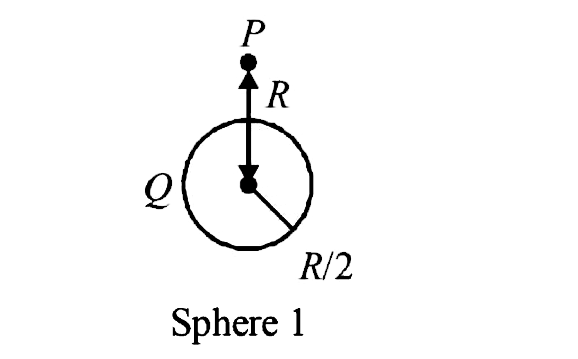
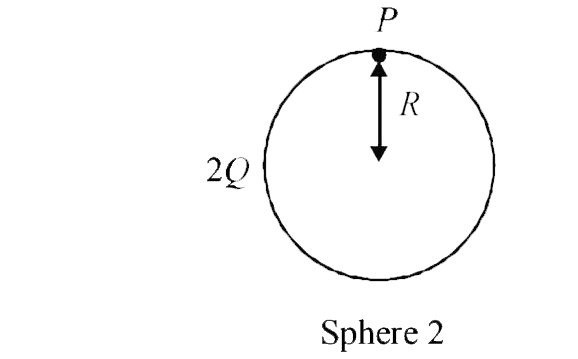
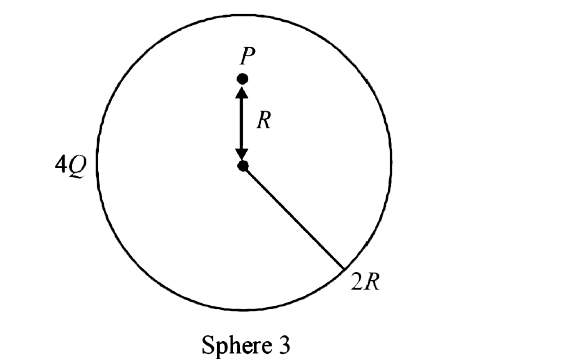
E1>E2>E3
E3>E1>E2
E2>E1>E3
E3>E2>E1
The correct Answer is:C
E1=KQR2
E2=K2QR2=2KQR2=2E1
E3=K×4Q×R(2R)3=KQ2R2=E12
E2>E1>R3
Similar Questions
The electric field at 2R from the centre of a uniformly charged non - conducting sphere of rarius R is E. The electric field at a distance ( R )/(2) from the centre will be
View SolutionThree concentric conducting spherical shells of radii R,2R carry charges Q, -2Q and 3Q, respectively. Find the electric potential at r = R and at r = 3 R, where r is the radii distance from the centre.
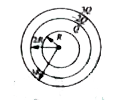
View SolutionLet P(r)=QπR4r be the charge density distribution for a solid sphere of radius R and total charge Q for a point 'p' inside the sphere at distancer, from the centre of the sphere, the magnitude of electric field is
View SolutionA charge Q is uniformly distributed in a dielectric sphere of radius R (having dielectric constant unity). This dielectric sphere is enclosed by a concentric spherical shell of radius 2R and having uniformly distributed charge 2Q. Which of the following graph correctly represents variation of electric field with distance r from the common centre?
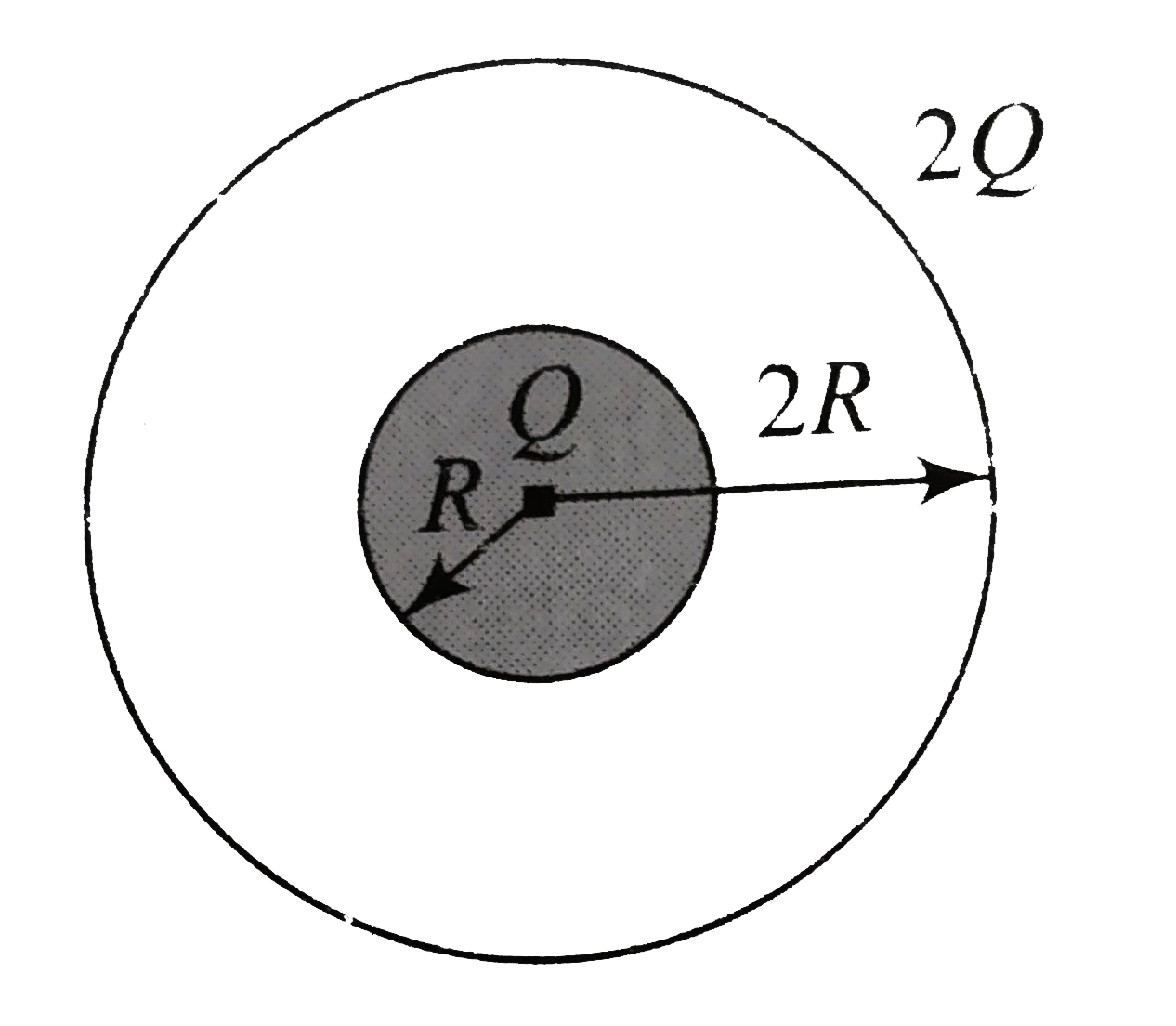
View SolutionThe electric field at 2R from the centre of a uniformly charged non - conducting sphere of rarius R is E. The electric field at a distance R2 from the centre will be
View SolutionCharges Q, 2Q and 4Q are uniformly distributed in three dielectric solid spheres 1, 2 and 3 of radii R/2, R and 2R respectively, as shown in figure. If magnitude of the electric fields at point P at a distance R from the centre of sphere 1,2 and 3 are E1,E2andE3 respectively, then



View SolutionLet E_1(r) , E_2(r) and E_3(r) be the respectively electric field at a distance r from a point charge Q , an infinitely long wire with constant linear charge density lambda , and an infinite plane with uniform surface charge density sigma . If E_1(r_0)=E_2(r_0)=E_3(r_0) at a given distance r_0 , then
View SolutionLet E1(r), E2(r) and E3(r) be the respectively electric field at a distance r from a point charge Q, an infinitely long wire with constant linear charge density λ, and an infinite plane with uniform surface charge density σ. If E1(r0)=E2(r0)=E3(r0) at a given distance r0, then
View Solution
